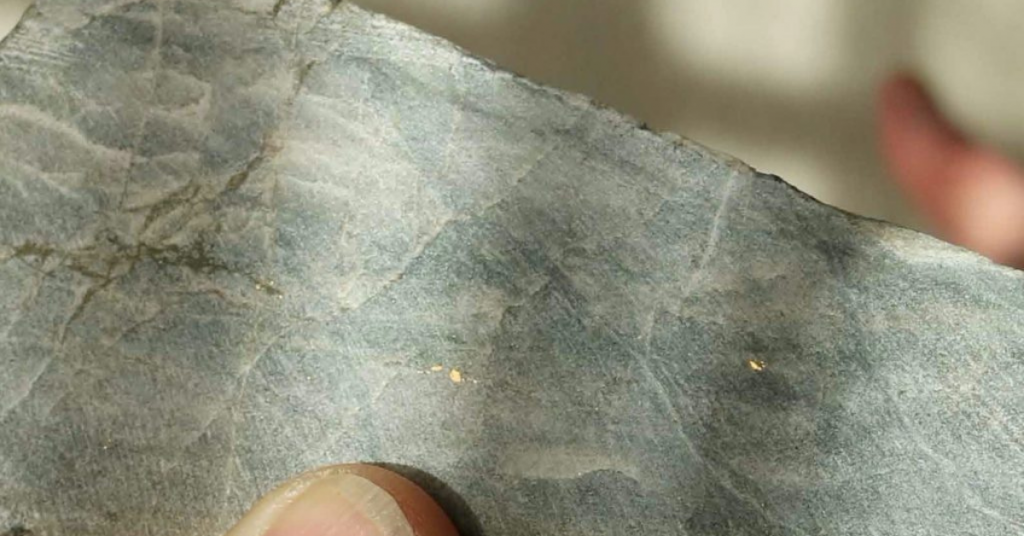Highlights
- Initial JORC compliant Inferred Mineral Resource estimate of 88.6koz at 7.47g/t gold
- Knowledge gained from the completion of the Mineral Resource estimate to be used to assist in planning for Comet’s upcoming drilling program at the Santa Teresa Gold Project
Comet Resources Limited (Comet or the Company) (ASX:CRL) is pleased to announce the results of the initial JORC compliant Mineral Resource estimate for its Santa Teresa High Grade Gold Project in Baja California, Mexico.
The Mineral Resource estimate (shown in Table 1 below) was calculated based on the application of top cap grades on a lode by lode basis as assessed by the Competent Person, and a gold cut-off grade of 2.5g/t. Please refer to the attached JORC table 1 in Appendix A for further details of the Mineral Resource estimate.
| Classification | Tonnes (‘000) | Gold grade | Contained gold (‘000 ounces) |
| Inferred | 369 | 7.47g/t | 88.6 |
Table 1: Santa Teresa Gold Project JORC Mineral Resource estimate.
A sensitivity analysis (shown in Table 2 below) was also performed using different top cut grades to show the effect on amount of contained gold. The results based on these different levels of top cuts are shown in table 2 below. Please note the cut-off grade remains 2.5g/t for all levels of top caps shown.
| Top cut grades applied | Inferred Mineral Resources (‘000, tonnes) | Gold grade | Contained gold (‘000 ounces) |
| 20g/t | 410 | 6.52g/t | 85.9 |
| 50g/t | 414 | 8.94g/t | 119.0 |
| Uncapped | 414 | 13.07g/t | 174.0 |
Table 2: Effect of different top caps on the Inferred Mineral Resource estimate. (Please note that these are shown only for comparative purposes and do not constitute implied alternative Mineral Resource estimates. The only Inferred Mineral Resource estimate is highlighted in Table 1 showing 88.6 k Oz.)
Comet Managing Director, Matthew O’Kane, commented “The initial JORC compliant Resource is the first step for Comet in moving forward with Santa Teresa. Through this process we have increased our understanding of the mineralisation. It is also interesting to see the sensitivity of the resource to different top cap grades. With the Resource being open at depth and along strike, I am confident that we can extend mineralisation with the upcoming drilling.”
The updated Santa Teresa gold Mineral Resource estimate was completed by independent consultants from Cube Consulting Pty Ltd.
Geology and Geological Interpretation
The Santa Teresa gold deposit is located within the Peninsular Range of Baja California. The Peninsular Ranges batholith (large area of intrusive igneous rock) is the southernmost chain of North American Mesozoic batholiths that extend from Alaska to the southern tip of Baja California.
The deposit is underlain by quartz diorite intrusive rocks cut by a dense swarm of older gabbro and hornblende porphyry, and younger diabase dykes. The older dykes trend northwest-southeast with dips that are steep to moderate. The diabase dykes are the youngest set and are consistent in strike and dip averaging 320° and dipping 55° northeast. The dykes pinch and swell, varying in width from 7 cm to 12 m. The quartz diorite is white, medium-grained, and contains black hornblende and biotite.
Gold mineralisation at Santa Teresa is within parallel, northwest-trending, southwest dipping to near vertical mesothermal lode-gold quartz vein systems. The veins range in width from a few cm to about three metres in width, and up to several hundred metres of known strike length. In general, the quartz veins are narrow, averaging less than 0.3 m in width, occupying parallel fractures with sheared walls. The veins typically strike 300° and dip southwest 80°. The veins maintain the general trend even where interrupted by pre-mineralisation dykes. In detail the veins pinch and swell, bend, or split into many stringers.
A second generation of veining followed a fracturing episode and was accompanied by epidote, hornblende and sparse mineralisation of galena, sphalerite, pyrite, marcasite, pyrrhotite, chalcopyrite, magnetite, specularite, and native gold. Gold occurs in the quartz veins and in contact with sulphides such as galena, magnetite, and pyrite.
Mineralisation of the quartz veins/shear zones is stoped out (over-printed) by a series of post-mineralisation diabase dykes that are interpreted to dip moderately to the north-east. Given the current level of drilling data it was not possible to accurately model post-mineralisation dykes as 3D wireframes for incorporation into the geological model. Due to the uncertainty of the position and extent of the post-mineralisation dykes, an indicator kriging (IK) approach was used to create a localised model of the dykes, which provided a more accurate amount of tonnage reduction to apply locally. The IK model essentially estimates the proportion of diabase dyke per block.
Figure 1 and Figure 2 show plan and long section views of the mineralised veins.
Information about the vein size and orientation comes from surface outcrop, previous small-scale mining and diamond drill holes.
Drilling and Sampling Techniques
Thirty-two HQ sized (63.5 mm diameter) surface diamond drill holes were drilled by Premier Gold Mines Ltd. (Premier) in 2008. The holes were drilled at various dips towards the north-east, perpendicular to the known strike of the veins. Core recovery was very good, with the only significant core losses occurring at the surface. All holes were logged for lithology, alteration and structure, and photographed before sampling.
Sampling was via half-core, longitudinally sawn down-hole. Sample intervals were based on geological contacts, with the sample length varying between 0.7 m and 3.05 m, with a mean of 1.07 m, however the most common sample interval for the mineralised shoots was 1 m. Samples were dried prior to preparation and then crushed to 90% passing 2 mm using a jaw crusher. A rotary splitter was used to obtain 500 gram sub-samples for pulverizing.
Sample Analysis Method
All samples were sent to American Assay Laboratories in Sparks, Nevada, USA. After pulverizing, analysis for gold was by lead collection fire assay fusion with gravimetric finish. It was recognised that there was significant coarse gold at the property, and consequently all samples with visible gold or galena, and ribbon or banded quartz veins were analysed by 500 gram or 1 kg screen metallic fire assay. The samples submitted for screen metallic assaying were screened at 106 microns, and the weight of both coarse and fine fractions were recorded to produce a final weighted average gold assay.
Estimation Methodology
Contained gold was estimated using ordinary kriging (OK) for each of the thirteen lodes using Datamine software. Estimation was calculated based on parent blocks, with sub-blocks assigned to each parent block grade. Hard domain boundaries were used between the lodes i.e., data from each lode was only used for the estimate of that lode.
The average sampled interval length was 1.07 m, and therefore 1 m was chosen as the compositing length. To avoid loss of data from small ‘residuals’ at the end of a composite (i.e., small intervals that might otherwise be excluded), a compositing routine that divided each mineralised intercept into equal lengths that was as close as possible to 1 m was chosen.
There are some very high to extreme outlier gold grades observed in individual data points in the lodes, so top-capping was performed and top-caps were selected on a lode-by-lode basis, rather than a global cap on the grades for all combined lodes. Top-caps were applied to four lodes, but for some lodes where data exhibited on average high grades, but no extreme outliers, caps were not applied.
Variography was performed in Supervisor software, with the composite data transformed to normal scores and the variogram model back-transformed to original units. Due to the very limited number of composites in each lode, variography was only performed for Lode 5 (Cruda Vein), and applied to all lodes. The experimental variograms (and subsequent nugget/spherical models) were omni-directional in the plane of continuity i.e., consistent with vein geometry, with a different range across dip. The variogram model had a moderate nugget effect (50% of total sill), with a maximum range of 52 m.
A parent block size of 5 mE x 20 mN x 5 mRL was chosen for the Santa Teresa Mineral Resource estimate, which is about half the drill hole spacing. The model was rotated 50° to the west (i.e., about the Z axis) so that the Y axis blocks are parallel to the mineralised lodes. The parent blocks were then sub-blocked down to 0.5 mE x 2.5 mN x 1 mRL for accurate volume representation of the lodes.
The resulting block model volumes per lode were all within 0.6% of the mineralised lode wireframe volumes, with most within 0.2%.
Three search passes were run. The size of the initial anisotropic search ellipsoid was based on the variogram ranges. The searches were oriented in the same directions as the variograms i.e., parallel to the individual vein geometries. The search parameters for each pass are provided in Table 3 below.
| Search Pass | Minimum No. of samples | Maximum No. of samples | Search Ellipsoid Radius |
| 1 | 6 | 14 | 50 x 50 x 10 |
| 2 | 6 | 14 | 100 x 100 x 20 |
| 3 | 2 | 14 | 250 x 250 x 50 |
Table 3: Variography search parameters employed in Santa Teresa Mineral Resource estimate.
As there are few samples, then the second and third search passes were most often used. Estimates of gold grades were validated against the composited drill hole data by extensive visual checking in cross-section, plan and on screen 3D views, by global (per shoot) comparisons of input data and model, and by semi-local statistical methods (swath plots). All methods showed satisfactory results.
There are no density measurements at the deposit, so a default bulk density of 2.8 t/m3 was applied.
Cut-off Grade
A lower cut-off grade of 2.5 g/t gold was applied at Santa Teresa. An Internet search for mining/processing costs in 2019 for underground, narrow-vein gold mines in Mexico showed that many of them are producing for less than US$100 per tonne, with a maximum of US$144/tonne.
At a gold price of US$1,900/ounce (as at early October 2020), revenue from 2.5 grams of gold would therefore be ~US$150 per tonne (assuming 100% recovery), so a lower cut-off grade of 2.5 g/t gold was used to calculate the Mineral Resource estimate.
Mining and Metallurgical Parameters
Gold grades and geometry of the mineralised veins are amenable to small-scale underground mining, and there is an extensive mining history in the area. No dilution for mining has been incorporated into the model. The model and reported Inferred Mineral Resources are for the mineralised lodes only, and further mining studies are required to determine the appropriate amount of dilution.
Metallurgical test work on Santa Teresa was completed in March 2016 by ALS Metallurgy, Kamloops, British Columbia. Three samples weighing between 1.1 and 2.1 kg were used for preliminary gravity testing, which was completed by first feeding each of the pulverized samples through a Knelson gravity concentrator. The gravity concentrate was then hand panned to reduce the mass recovery to a more representative value for a concentrator gravity circuit. The results ranged between 26% and 77%, with higher recoveries correlating with higher grades.
Note however that these recoveries are only for an initial gravity circuit, and it would be expected that the recoveries would be close to 100% for additional processing routes e.g., carbon in leach.
Classification
100% of the material contained in the Santa Teresa Mineral Resource estimate has been classified in the category according to JORC. This is based on:
- Data quality and quantity is considered reasonable for the Premier-era drilling, although some unresolved QAQC issues results in a lack of confidence.
- There are no bulk density measurements for the deposit.
- Uncertainty in the amount of tonnage reduction of the mineralised lodes from the post-mineralisation diabase dykes.
- Alternative interpretations of the mineralised lodes are possible.
- There are generally few samples per lode, resulting in lower confidence kriging metrics (i.e., the kriging variance is high).
- Search passes greater than the variogram range required to inform the majority of blocks (93%).
For further information please contact:
MATTHEW O’KANE
Managing Director
(08) 6489 1600
comet@cometres.com.au
cometres.com.au
Suite 9, 330 Churchill Avenue Subiaco WA 6008
PO Box 866 Subiaco WA 6904
Original Article: https://wcsecure.weblink.com.au/pdf/CRL/02292972.pdf


















